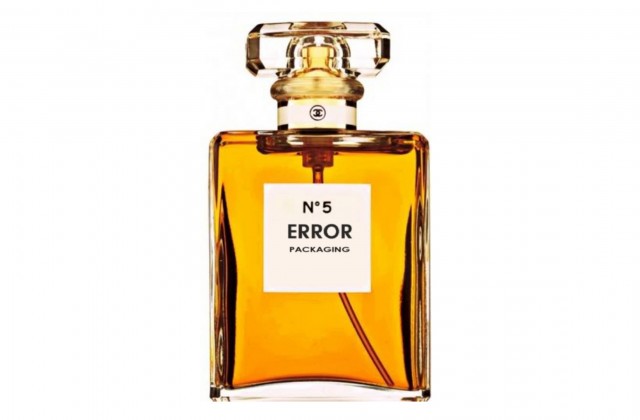
In all markets, there is a category that we cannot define as “clients”.
They hire us for tasks they will never implement and, with great effort, they will eventually proceed with a clear briefing. Usually, they do not even know the processes of the works we are hired for and, equally, within their small companies, they follow directly all their suppliers. In short, they are not structured at all, but, despite this, they live in the most firm belief that they are capable. Always ready to show off, never willing to get into discussions.
They remind me so much of that old chemistry teacher who reproved the entire class because he himself was unable to give a lecture!
One certainty: with them you will lose time and money!
On the other side of the fence, fortunately, smart managers and entrepreneurs who know exactly what they do and fight with coworkers and partners for the benefit of the company.
In this context, the same concept can have contrasting perceptions; so, a saying like “The customer is always right” – a phrase heard and repeated millions of times, can turn, depending on the speaker, into a gospel truth or into an absurdity.
If I analyze it with my almost twenty years of experience in taking briefings in the field in which I work (marketing and packaging), I can say that in many cases this phrase can be pronounced out loud.
Where does the problem arise for those who create packaging?
One of the most frequent errors of the account manager of an agency is not seeing the problem from the right angle. A one-way perspective combined with the habit of never putting into question their own work or that of the team – thinking only about aesthetic and creative components, leads inevitably to conclusions like “our project is more beautiful than the one they chose”.
The truth is that there is no expression more stupid than this!
When you are in the race to win a project and a client, you are trying to give the best and, despite of this, it may happen that the client’s final choice is favorable for your competitors.
Now, on a scale from 1 to 10, what is the value of complaining and trying to invalidate the performance of your competitor, looking for defects in a proposal that satisfied and fulfilled the client’s expectations?
You are right, … ZERO!
And yet you lose a lot of time comparing your project with the packaging chosen by the client.
Analyzing the aesthetics, creativity and the beauty of the winning project is useless (most certainly, these are not the elements that made your competitor win). It would be much more profitable to analyze back the entire process while you worked in the client’s project: the instant of the first approach, the briefing, the development of the first ideas…
It would be much better to ask yourself: where did we lose the client? In what step?
That is the step to work on.
I will explain this quickly. Let’s assume that a packaging development is like a chess match. Losing is always due to your wrong moves. It is not that the opponent wins, but it is about you making the wrong moves.
If you had played by the marketing rules, you would have won the project. But, it takes years of study and experience to learn all the right moves on the chessboard. Therefore, we must begin to think that every time the client does not buy from you it is due to the fact that he considers that your proposal is not appropriate and does not fulfill the expectations of his target market.
I explain better the 5 possible mistakes:
1. BRIEFING
The briefing was done the wrong way.
The client is not always able to express exactly what his needs are and, additionally, the interview conducted by the agency has not been deeply enough to understand his problem. That is why you have not found the appropriate solution for him.
“I’m sorry but we did not choose your project.”
2. SPECIALIZATION
Frequently, agencies are not specialized, but they are generalist.
Example: they are not focused only on the packaging or on advertising or on below the line communications and so on. Actually, they do not work in a particular business industry or sector… Conclusion? They do too much!
Client’s target market is complex and, subsequently, you have not conducted a proper research with respect to the development of the project. Too hard, too complicated. Finding a differentiating solution to boost your client’s sales becomes impossible.
“I’m sorry but it is not there yet! We appreciated the effort but your competitor’s proposal is right for us.”
3. CREATIVITY
It is one of the worst mistakes you can make, because the client will be satisfied with graphics and designs you presented. Both the account manager and the entire agency will make the same mistake next time, thinking they did correctly, without understanding why they chose the competitor’s project.
Developing the packaging from a graphic point of view, without considering the importance of a solution to increase sales, involves choices focused solely on aesthetic considerations. In other words, “… as long as it looks nice …”
Regarding the role of creativity and how an agency should use it, I have written several posts on this blog.
Going back to the account manager I mentioned before, if he was good at what he does, instead of demanding art director’s creativity, he should stop the process and aim at a correct presentation (the moment when he defends in front of the client the decisions that make the packaging a winning choice). And, if necessary, he should go back and brainstorm again, reviewing the briefing from the beginning.
“Aesthetically, we like it. We were very undecided between yours and your competitor’s, which in the end we found more suitable, so we opted for that.”
4. IN MY OPINION
I would buy this packaging.
You should never, I repeat never, develop a graphic project using your own beliefs as determinant. This is also one of the first marketing rules. Quite often we are not the target audience. That’s why out of 10 times you do this kind of thinking, you will be wrong in 9, when trying to develop a packaging aimed at increasing sales.
It is not us, the art director, art buyer, advertising man, the account manager, and so on who buy stock cubes, diapers for babies, tight stockings.
“We have to think, we’re not sure yet. For now, we stopped the project.”
5. FIND THE DIFFERENCE
This error sums up all the errors mentioned above. Not being capable to differentiate the product from the competitors’ ones means not converting the product in money and being profitable.
The client (as we said) may not be able to transmit 100% what he wants, during the briefing phase. But, he certainly understands the final step, if the purchase he is doing is right. He knows that the packaging has the duty to speak to consumers in a proper way.
Very often, if the client does not have budget to implement a standard communication campaign, the packaging remains the last and the only way to convince the consumer to buy his products. If you have not thought of this mistake, then you will not sell.
“We believe that your project is missing the concept of sale. We are convinced that the competitor’s proposal is better. Thank you! “
I hope these 5 points provide a useful perspective to both sides to work towards more satisfactory solutions.
Do you want a packaging that does not include the 5 listed mistakes? To learn more contact us.
In 1996 enters in the world of marketing, in 1999 founded Ardigia Marketing Funzionale (Ardigia Functional Marketing), in 2013 founded Packaging in Italy, Design Agency for Packaging Positioning™



tacconi francesco
io credo di saperne molto di packagin,ma quando leggo i vostri articoli mi sento spaesato attonito,perche mi sembra cosi chiaro quello che dite che vorrei essere voi.e tutte le mie conoscenze di lustri si appiattiscono paurosamente poi mi ricordo che sono un innovatorelivello e penso di potervi dare una mano,e voi a me.